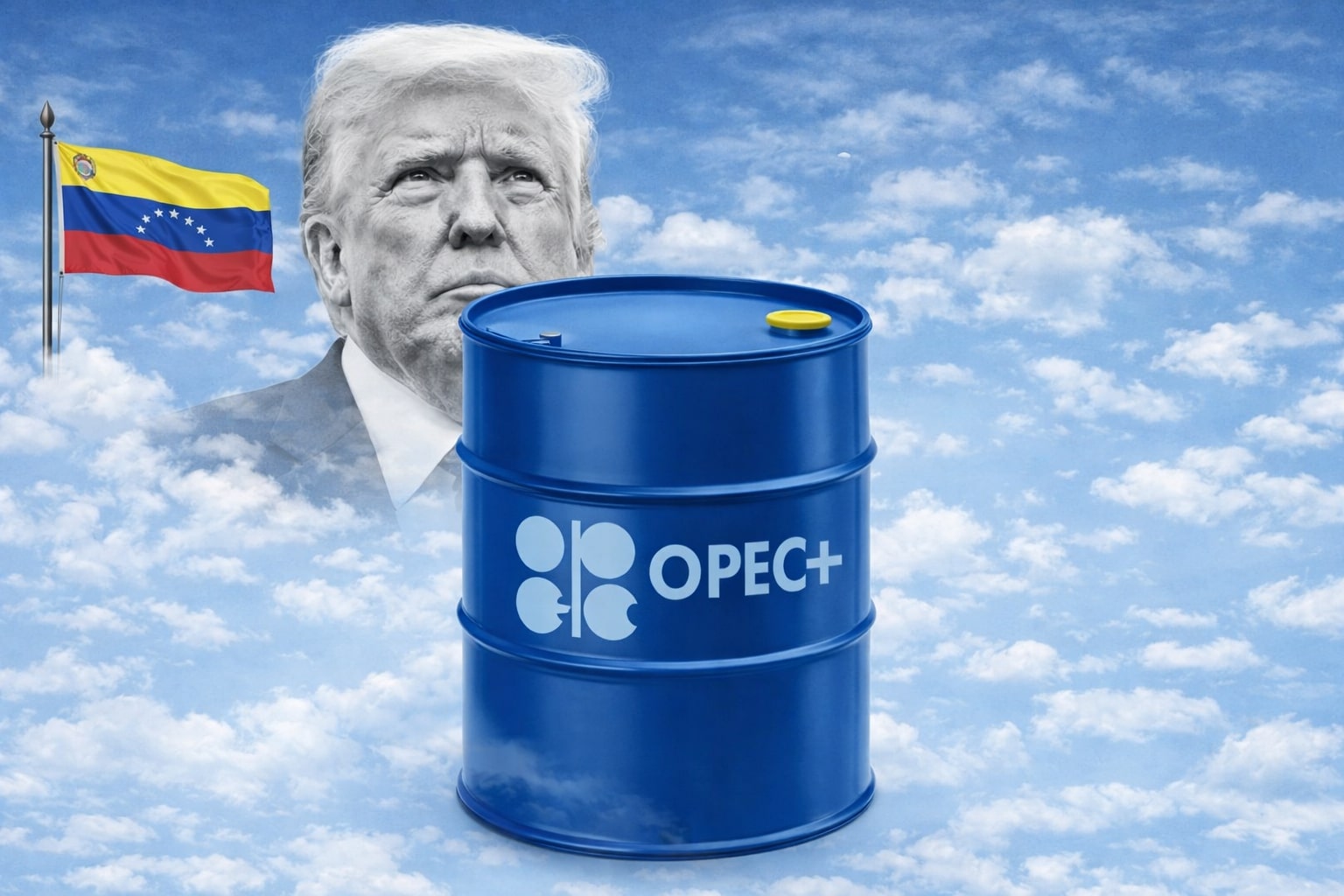
Oil Price Forecast: WTI $62.69, Brent $66.99 Under Supply and Geopolitical Pressure
Global oil faces demand softness, OPEC+ discounts, U.S. shale layoffs, and Middle East risks as WTI and Brent hover near critical support levels | That's TradingNEWS
Oil Prices Face Structural Pressure: WTI (CL=F) and Brent (BZ=F) Struggle Near $62–67
West Texas Intermediate (CL=F) trades around $62.69 per barrel, edging just 0.5% higher, while Brent (BZ=F) holds at $66.99, up 0.9%. The recovery looks fragile as Saudi Arabia and Iraq deepen discounts to Asian buyers, signaling weak demand. Bonny Light crude slid 2.8% to $78.62, while U.S. Mars crude dropped 1.3% to $71.28, reflecting oversupply concerns across grades. Gasoline futures at $1.98 per gallon show refiners passing weaker crude benchmarks into product pricing.
Demand Signals from Asia and Europe Undermine Bullish Case
China continues its heavy buying of discounted Russian oil, despite U.S. sanctions pressure, with imports flowing at levels that offset OPEC+ restraint. Saudi Arabia is countering by slashing October prices to Asian refiners, an aggressive move that puts Brent under pressure. The European Union’s decision to fix 2028 as the final deadline for Russian energy exit is being overshadowed by near-term softness in industrial demand, with Germany’s industrial output lagging and Eurozone refiners cutting throughput.
U.S. Oil Patch Feels the Squeeze as WTI Slips Below $65
The U.S. shale sector is showing cracks. Employment in oil and gas fell 1.7% in August, wiping out 6,021 jobs, taking industry headcount back to 2022 levels. Chevron is targeting a 20% workforce reduction by 2026, equal to about 10,000 positions, while ConocoPhillips plans to cut up to 25% of its staff after acquiring Marathon Oil. These workforce contractions are a direct response to WTI trading closer to $62–63, a level dangerously close to breakevens for smaller independents.
OPEC+ and Supply Cuts Collide with U.S. Oversupply
Despite pledged OPEC+ restraint, global production continues to outpace consumption. Russia’s oil revenue has collapsed to multi-year lows, yet crude continues to flow through discount routes into Asia. Iraq is exploring a new export corridor via Oman, while Turkey expands access for LNG imports, further diluting OPEC’s supply control. The OPEC basket price stands at $70.43, highlighting the gap between benchmark grades and actual trade flows under discount structures.
Geopolitical Shock Adds Volatility to Oil Futures
Geopolitical risk remains a constant bid under oil prices, even as demand weakness dominates. Israel’s strike in Qatar triggered a sudden jump in futures last week, underscoring how fragile balances are when Middle Eastern supply routes face disruption. U.S. jet deployments in Guyana, linked to escalating tensions around offshore oil production, add another geopolitical flashpoint. Trump’s push for G7 tariffs on Chinese and Indian imports of Russian oil could further distort trade patterns, although EU resistance remains strong.
Energy Transition and Investor Pressure on Oil Majors
Pressure on producers is amplified by climate policy. The International Energy Agency recently walked back its overly aggressive call for peak oil demand but still forecasts muted long-term growth. African nations are pushing for global climate finance, while the U.S. and Europe remain split on how far to stretch sanctions and tariffs. Meanwhile, Aramco is increasing borrowing after lower oil prices eroded fiscal inflows, and U.S. majors like Chevron and Exxon are diverting more capital into LNG and carbon capture to satisfy shareholder and policy demands.
Technical Levels and Market Outlook for WTI and Brent
For WTI (CL=F), support holds at $60.50–61.00, with resistance capped near $65.80. Brent (BZ=F) shows a band between $66.00 support and $69.40 resistance, with momentum skewed bearish as long as Asian discounts persist. If WTI fails to reclaim $65, analysts warn of a slide toward $58–59, a range that would trigger sharper U.S. drilling cuts. Conversely, a breakout above $67 in Brent would require clear evidence of OPEC+ holding firm and Chinese demand stabilizing.
Verdict: Oil Market Bias Tilts Bearish, Short-Term Relief Possible
Oil remains trapped between geopolitical risk premiums and structural oversupply. With WTI at $62.69 and Brent at $66.99, the market leans bearish into Q4 unless OPEC+ enforces deeper cuts or U.S. shale output contracts more aggressively. For investors, crude looks like a Hold with a bearish tilt, as near-term volatility from Middle East shocks may offer price spikes, but the broader trajectory suggests pressure toward the low $60s.
That's TradingNEWS
Read More
-
DGRO ETF Price: Is DGRO at $69.17 Still the Better Dividend-Growth Bet?
17.12.2025 · TradingNEWS ArchiveStocks
-
XRP Price Stuck Below $2 As XRPI at $10.74 and XRPR at $15.26 Ride $1B+ ETF Inflows
17.12.2025 · TradingNEWS ArchiveCrypto
-
Natural Gas Price Forecast - NG=F Steady Near $4 as TTF Jumps on Colder Forecasts and LNG Outage Risk
17.12.2025 · TradingNEWS ArchiveCommodities
-
USD/JPY Price Forecast: USDJPY=X 155.50 Pivot Before BoJ Hike and US CPI
17.12.2025 · TradingNEWS ArchiveForex



















